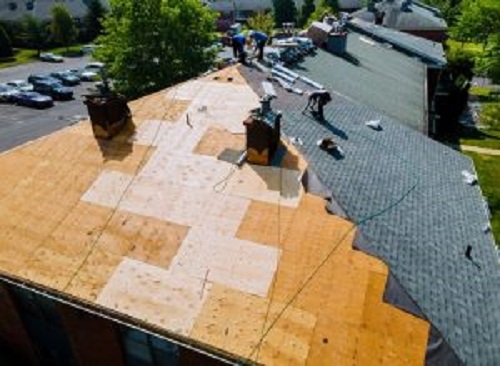
The longevity of a roof is a crucial factor in determining the overall durability and value of a property. Homeowners and building managers often wonder how long a roof should last before considering replacement. While there is no definitive answer applicable to all situations, several factors influence a roof’s lifespan. Understanding these factors and recognizing signs of deterioration can help make informed decisions about roof replacement, ensuring the safety and protection of the underlying structure.
Factors Affecting Roof Lifespan
- Material Quality: The type and quality of roofing materials play a significant role in determining how long a roof will last. Asphalt shingles, for instance, typically last between 20 to 30 years, while metal roofs can endure for 40 to 70 years.
- Climate and Weather Conditions: Harsh weather conditions, such as extreme temperatures, high winds, heavy rainfall, and exposure to UV radiation, can significantly impact a roof’s lifespan. Roofs in regions with more severe climates may require more frequent inspections and maintenance.
- Installation Quality: Proper installation is vital to maximizing the lifespan of a roof. Poor workmanship can lead to premature deterioration, leaks, and other issues. Hiring a reputable and experienced roofing contractor is essential to ensure correct installation practices.
- Maintenance: Regular maintenance, including roof inspections, cleaning, and addressing minor issues promptly, can extend the lifespan of a roof. Neglecting maintenance tasks can accelerate deterioration and shorten the roof’s lifespan.
While a well-maintained roof can last for many years, certain signs indicate that it may be time for a replacement:
- Age: As roofs approach or exceed their expected lifespan, they become more susceptible to damage and may require replacement to maintain their integrity.
- Visible Damage: Cracked, curled, or missing shingles, as well as sagging or rotting areas, indicate significant wear and tear. These issues can compromise the roof’s ability to protect against water infiltration and require immediate attention.
- Leaks: Persistent roof leaks, especially after repair attempts, may suggest extensive damage that necessitates replacement. Water infiltration can lead to structural damage and the growth of mold and mildew.
Determining the lifespan of a roof depends on various factors, such as the quality of materials, climate conditions, installation craftsmanship, and regular maintenance. While some roofing materials have estimated lifespans, it is crucial to monitor the roof’s condition over time and be proactive in addressing signs of deterioration.
Regular roof inspections by a qualified professional can help identify potential issues early on, allowing for timely repairs and maintenance. Homeowners should also maintain proper attic ventilation, as excessive heat and moisture can accelerate roof deterioration.
When signs of wear and tear become apparent, it is advisable to consult with a roofing professional to assess the roof’s condition accurately. Factors such as the extent of damage, cost of repairs, and the remaining useful life of the roof should be considered when deciding whether to repair or replace.
While it can be tempting to delay roof replacement due to cost considerations, neglecting a deteriorating roof can lead to more significant problems, including structural damage and costly repairs from water infiltration.
In conclusion, the lifespan of a roof varies depending on multiple factors. Regular maintenance, prompt repairs, and proactive monitoring can extend a roof’s longevity. When signs of significant damage or age-related deterioration arise, consulting with roofing experts will help determine if it is time to replace your roof.

No comments:
Post a Comment